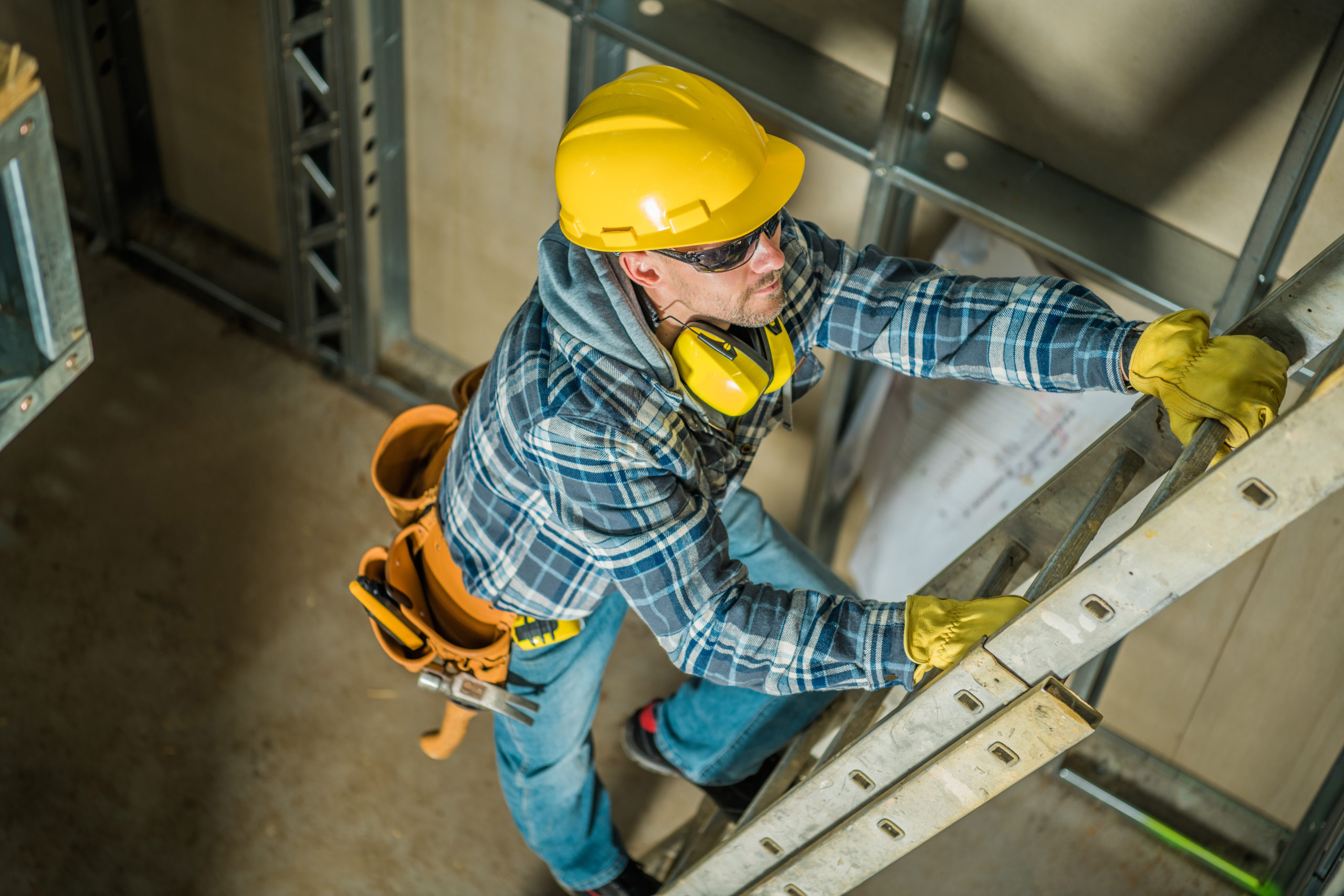Ladders, common tools in countless workplaces, can quickly turn from a means of reaching heights to potential hazards if not used properly. Ladder-related incidents are among the leading causes of workplace injuries, making ladder safety paramount for any organization. Did you know that ladder-related falls at work lead to one fatality and over 180 nonfatal injuries every two days? (1)
Let’s review ladder safety tips.
1. Choose the Right Ladder for the Task
Selecting the appropriate ladder for the job is the first step in ensuring safety. Consider factors such as height, material, and load capacity. Different tasks may require step ladders, extension ladders, or specialty ladders designed for specific purposes.
2. Inspect Before Use
A thorough inspection before each use is crucial. Check for any signs of damage, such as cracks, loose rungs, or bent rails. If any defects are found, the ladder should be taken out of service immediately and repaired or replaced. Make sure to read the applicable safety information label(s) on the ladder before use.
3. Set Up on Stable Ground
Ensure that the ladder is placed on a stable and level surface. If working outdoors, use leg levelers or mudsills to maintain stability. Never place ladders on uneven or slippery surfaces.
4. Maintain Three Points of Contact
When climbing or descending, always maintain three points of contact with the ladder—either two hands and one foot or two feet and one hand. This provides stability and reduces the risk of falling.
5. Face the Ladder
Always face the ladder when ascending or descending. Never overreach, as it can lead to loss of balance. Instead, reposition the ladder to keep your body within the side rails.
6. Secure the Top and Bottom
Secure the top of the ladder to a stable support, and if applicable, use safety devices like ladder brackets or ties to prevent movement. Ensure that the bottom is also secure, either by having a second person hold the ladder or by using anti-slip devices.
7. Follow Load Capacity Guidelines
Each ladder has a specified load capacity. It’s crucial to adhere to these guidelines and never exceed the maximum load. Consider both the weight of the user and any tools or materials being carried.
By integrating these safety tips and adhering to OSHA standards, organizations can significantly reduce the risk of ladder-related incidents. Ladder safety is not just a matter of compliance; it’s a commitment to prioritizing the well-being of workers who rely on these tools daily. With careful consideration, proper training, and consistent adherence to safety protocols, utilizing ladders on the job site becomes a routine task performed confidently and, most importantly, without unnecessary risk.
OSHA Standards for Ladder Safety (2) (3)
1. 1926.1053: Stairways and Ladders: Ladder Use
This OSHA standard outlines general requirements for the safe use of ladders in construction. It covers aspects such as duty ratings, ladder design, and guidelines for maintaining ladder integrity.
2. 1926.1050: Stairways and Ladders
This subpart applies to all stairways and ladders used in construction, alteration, repair (including painting and decorating), and demolition workplaces covered under 29 CFR part 1926, and also sets forth, in specified circumstances, when ladders and stairways are required to be provided.
3. 1910.23: Ladders
Applicable to the general industry, this standard outlines regulations for the construction and use of ladders. It covers specifications for different types of ladders, including portable, fixed, and mobile ladder stands.
Sources:
- https://www.americanladderinstitute.org/page/LadderResources
- https://www.osha.gov/laws-regs/regulations/standardnumber/1910/1910.23
- https://www.osha.gov/laws-regs/regulations/standardnumber/1926/1926.1053
If you have questions, contact us today to speak with a safety consultant near you. Our team provides construction companies of all sizes and trades with site safety audits, and health and safety training. For continuous project safety compliance and support, we have Site Safety and Health Officers available.
Call (866) 222-4972 or send us a message below!
 ">
">

 ">
">
 ">
">